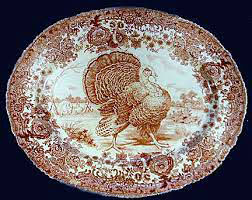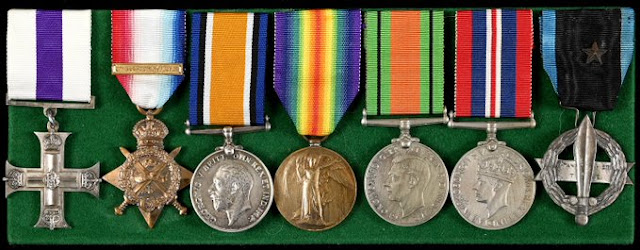 QUESTION: I found this old-world German Santa candy container in an antique shop a couple of months ago. He’s made of papier mache and stands about 6 inches tall. He’s wearing a cone-shaped hat and carries a small Christmas tree. A faint stamp on the bottom says “Made in Germany.” This little Santa comes apart in the middle to reveal a lined interior. Can you tell me more about this little gem?
QUESTION: I found this old-world German Santa candy container in an antique shop a couple of months ago. He’s made of papier mache and stands about 6 inches tall. He’s wearing a cone-shaped hat and carries a small Christmas tree. A faint stamp on the bottom says “Made in Germany.” This little Santa comes apart in the middle to reveal a lined interior. Can you tell me more about this little gem?
ANSWER: You have indeed discovered a little Christmas gem. What you have is a Santa candy container made in Germany around the turn-of-the-20th-century. Called a Springhead, this little novelty features a Santa wearing a red-flocked coat and a cone-shaped hat. He also carries a small Christmas tree decorated with colored beads.
Of all the holiday decorations produced since the mid-19th century, few remain as cherished as early German Santa Claus candy containers. These handmade characterizations of Father Christmas remain a popular collectible.
 The manufacture of Santa candy containers began in the 1880s. Makers sold them to an eager American market. By the end of the decade, U.S. retailers offered their customers German-made Santas in a variety of sizes and styles.
The manufacture of Santa candy containers began in the 1880s. Makers sold them to an eager American market. By the end of the decade, U.S. retailers offered their customers German-made Santas in a variety of sizes and styles.
Selling for a mere five cents, these Santas represented old Kris Kringle in snow-covered garb. Sometimes makers added gold tinsel to represent sparkling snow. Santa containers came in a variety of sizes, from five to seven-and-a-half inches tall. Santa, himself, had a finely painted red face and white beard and wore a heavy coat. Other Santas wore felt robes trimmed with lamb's wool or felt. Purple crepe paper sometimes lined the inside of the outfit. Some of the Santas carry a tiny wicker basket at their waist or on their back.
The Germans couldn't make them fast enough. The making of these early candy containers involved eight to ten families, each responsible for different areas of production. One family might fashion the boots, another would create Santa's clothing, while another would add Santa's rabbit-fur beard. But the most important step involved painting the face.
 Over the years the details of Santa’s face changed. One of the biggest influences was the poem “A Visit from St. Nicholas,” that portrayed Santa as a jolly old elf with a thick, flowing white beard and a white fur-trimmed suit. The public's impression of Father Christmas as a stern, thin old man changed dramatically in the late 19th century when Thomas Nast began illustrating St. Nick as a fat, jolly elf-like character for Harper's Weekly.
Over the years the details of Santa’s face changed. One of the biggest influences was the poem “A Visit from St. Nicholas,” that portrayed Santa as a jolly old elf with a thick, flowing white beard and a white fur-trimmed suit. The public's impression of Father Christmas as a stern, thin old man changed dramatically in the late 19th century when Thomas Nast began illustrating St. Nick as a fat, jolly elf-like character for Harper's Weekly.
People originally saw St. Nicholas, the patron saint of children, as a gift-giving old man who rode a white horse and gave goodies to children. Father Christmas took the initial image of St. Nicholas and gave it a twist, making him an old bearded man who doled out punishments as well as rewards.
 Residents of certain parts of Germany saw Christkindchen, the German Christ child, as a gift giver. The English butchered the pronunciation of the name, so that today he’s popularly known as Kris Kringle. This figure traditionally wore a white robe and a white jeweled crown, traveling the countryside on a mule. He was said to have been accompanied by Pelze Nicol, a boy with a blackened face. Yet even Pelze Nicol developed into his own personality, becoming Belsnickle, a sinister-looking Santa who punished bad children.
Residents of certain parts of Germany saw Christkindchen, the German Christ child, as a gift giver. The English butchered the pronunciation of the name, so that today he’s popularly known as Kris Kringle. This figure traditionally wore a white robe and a white jeweled crown, traveling the countryside on a mule. He was said to have been accompanied by Pelze Nicol, a boy with a blackened face. Yet even Pelze Nicol developed into his own personality, becoming Belsnickle, a sinister-looking Santa who punished bad children.
Important scientific discoveries have also been incorporated into these Christmas figures, the most notable being the invention of the light bulb. Between1907 and 1910, the Germans made Santa candy containers featuring an electric lantern strapped to Santa's chest. The figure also held a feather tree decorated with three electric bulbs. A battery operated all four lights.
 Likewise, Santa's means of transportation hasn't remained static over the years. Some candy containers show Santa on a sheep, donkey or mule, while others had him riding a sleigh made of moss. The Germans crafted log sleighs with the bed of the sleigh large enough to hold both candy and small wooden toys known as Ergebirge.
Likewise, Santa's means of transportation hasn't remained static over the years. Some candy containers show Santa on a sheep, donkey or mule, while others had him riding a sleigh made of moss. The Germans crafted log sleighs with the bed of the sleigh large enough to hold both candy and small wooden toys known as Ergebirge.
Where makers placed the candy and dried fruit and how they made them accessible varied from one container to another. Santas also carried different types of baskets. Some simply had a cloth or felt bag for goodies. Some candy containers came in two pieces, having removable heads or a cardboard tube that separated when Santa's legs and torso, enabling them to be pulled apart. Other examples, such as those showing Santa on a chimney, had a plug on the bottom or a paper seal.
 Regardless of the type, people gave Santa candy containers mostly as gifts. After the receiver ate the candy, they used the container as a holiday decoration. Even though people brought out these Santas for the holidays each year, they could be easily damaged not only by overzealous children allowed to play with the Santas, but also by prolonged exposure to sunlight. While children might physically destroy the candy container, the sun did consider-able harm by fading bright-red coats to a light-brown or turning the interior of the garment from purple to blue.
Regardless of the type, people gave Santa candy containers mostly as gifts. After the receiver ate the candy, they used the container as a holiday decoration. Even though people brought out these Santas for the holidays each year, they could be easily damaged not only by overzealous children allowed to play with the Santas, but also by prolonged exposure to sunlight. While children might physically destroy the candy container, the sun did consider-able harm by fading bright-red coats to a light-brown or turning the interior of the garment from purple to blue.
What destroyed the great artistry of German candy containers, however, was competition from foreign countries. By the 1920s the public was more willing to accept plainer-looking Santas, and the Japanese provided them. Although the Japanese based their candy containers on German examples, the fine details soon became too expensive to produce. The public accepted cheaper imitations, trading savings for a loss in quality.
It's that loss of true artistry over the years that makes vintage German-made Santa candy containers so collectible today. Prices begin at about $375 but rarer ones often sell for several thousand dollars.
To read more articles on antiques, please visit the Antiques Articles section of my Web site. And to stay up to the minute on antiques and collectibles, please join the over 30,000 readers by following my free online magazine, #TheAntiquesAlmanac. Learn more about "Return to Toyland" in the 2024 Holiday Edition, online now. And to read daily posts about unique objects from the past and their histories, like the #Antiques and More Collection on Facebook.





















































